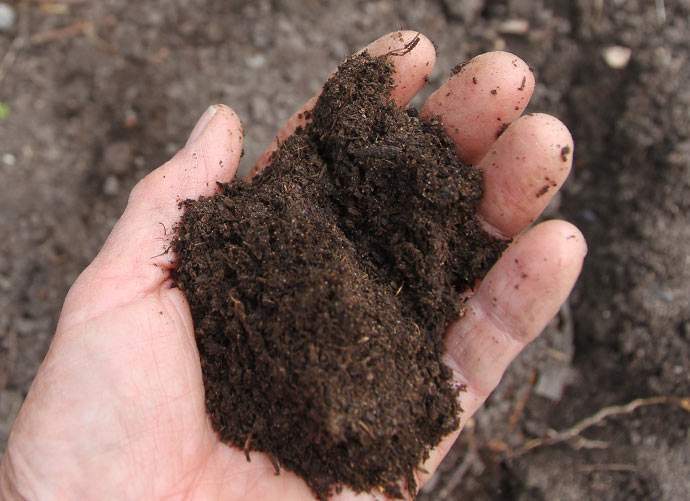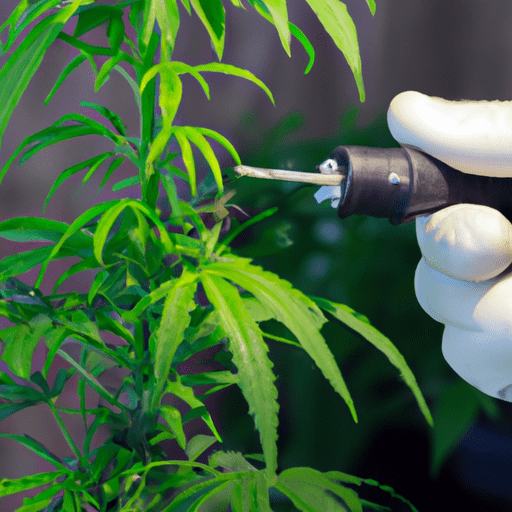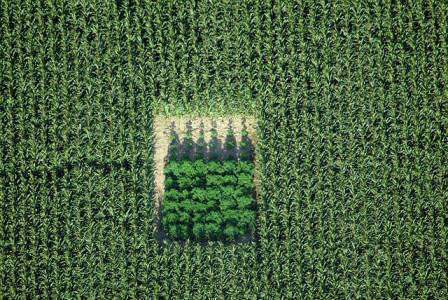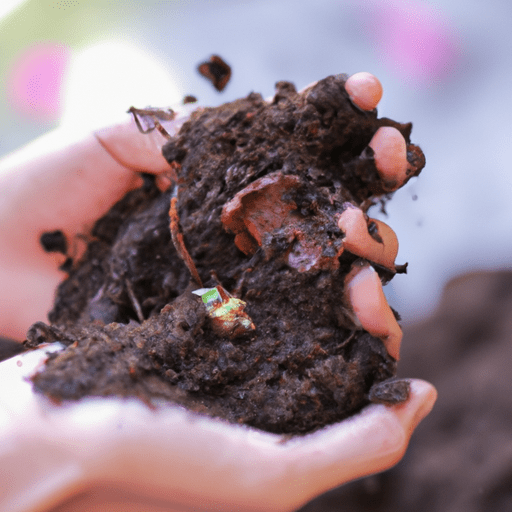-
Table of Contents
- Introduction
- Exploring the Pros and Cons of Autoflowering vs. Photoperiodic Cannabis Plants
- How Autoflowering and Photoperiodic Cannabis Plants Differ in Growth and Flowering Cycles
- Comparing the Yields of Autoflowering and Photoperiodic Cannabis Plants
- Exploring the Different Nutrient Requirements of Autoflowering and Photoperiodic Cannabis Plants
- Examining the Different Light Requirements of Autoflowering and Photoperiodic Cannabis Plants
- Conclusion
Introduction
Cannabis plants are a popular choice for many gardeners, and there are two main types of cannabis plants: autoflowering and photoperiodic. Autoflowering plants are easy to grow and require minimal care, while photoperiodic plants require more attention and care. Both types of plants have their own unique characteristics and benefits, and understanding the differences between them can help you decide which type of cannabis plant is best for your garden. In this article, we will discuss the differences between autoflowering and photoperiodic cannabis plants, including their growth cycles, light requirements, and yield potential.
Exploring the Pros and Cons of Autoflowering vs. Photoperiodic Cannabis Plants
The cultivation of cannabis has become increasingly popular in recent years, and with this surge in popularity has come a variety of different types of plants. Two of the most common types of cannabis plants are autoflowering and photoperiodic plants. While both types of plants can produce high-quality cannabis, there are distinct differences between them that can affect the outcome of the harvest. In this article, we will explore the pros and cons of autoflowering and photoperiodic cannabis plants to help you decide which type of plant is best for your needs.
Autoflowering plants are a type of cannabis plant that will automatically begin flowering without the need for a change in light cycles. This makes them ideal for growers who are short on time or who are looking for a quick harvest. Autoflowering plants are also typically smaller and more compact than photoperiodic plants, making them easier to manage and cultivate. On the downside, autoflowering plants tend to produce smaller yields than photoperiodic plants, and the quality of the buds may not be as high.
Photoperiodic plants, on the other hand, require a change in light cycles in order to begin flowering. This means that growers must be prepared to adjust the light cycle in order to get the best results. Photoperiodic plants tend to produce larger yields than autoflowering plants, and the quality of the buds is usually higher. However, photoperiodic plants require more time and effort to cultivate, and they can be more difficult to manage.
In conclusion, both autoflowering and photoperiodic cannabis plants have their own unique advantages and disadvantages. Autoflowering plants are ideal for growers who are short on time or who are looking for a quick harvest, while photoperiodic plants tend to produce larger yields and higher quality buds. Ultimately, the decision of which type of plant to grow will depend on the individual grower’s needs and preferences.
How Autoflowering and Photoperiodic Cannabis Plants Differ in Growth and Flowering Cycles
Autoflowering and photoperiodic cannabis plants differ in their growth and flowering cycles in several ways. Autoflowering cannabis plants are a type of cannabis that flower automatically, regardless of the amount of light they receive. This type of cannabis is typically ready to harvest within 8-10 weeks of germination. In contrast, photoperiodic cannabis plants require a specific light cycle in order to flower. These plants typically require 12 hours of light and 12 hours of darkness in order to flower, and can take up to 16 weeks to reach maturity.
In terms of growth, autoflowering cannabis plants tend to be smaller and more compact than photoperiodic plants. Autoflowering plants typically reach a maximum height of around 24 inches, while photoperiodic plants can reach heights of up to 6 feet. Autoflowering plants also tend to produce fewer buds than photoperiodic plants, as they are not able to take advantage of the longer flowering period.
In terms of flowering cycles, autoflowering cannabis plants flower automatically, regardless of the amount of light they receive. This means that they can flower in any light cycle, including indoors or outdoors. Photoperiodic cannabis plants, on the other hand, require a specific light cycle in order to flower. This means that they must be grown indoors in order to flower properly.
Overall, autoflowering and photoperiodic cannabis plants differ in their growth and flowering cycles in several ways. Autoflowering plants are typically smaller and more compact, and flower automatically regardless of the amount of light they receive. Photoperiodic plants, on the other hand, require a specific light cycle in order to flower, and can reach heights of up to 6 feet.
Comparing the Yields of Autoflowering and Photoperiodic Cannabis Plants
The cultivation of cannabis has become increasingly popular in recent years, and with it, the debate over the merits of autoflowering and photoperiodic cannabis plants. While both types of plants can produce high-quality yields, there are distinct differences between them that must be taken into consideration when deciding which type of plant to cultivate.
In terms of yield, autoflowering plants tend to produce smaller yields than photoperiodic plants. This is due to the fact that autoflowering plants are typically shorter and have a shorter flowering period than photoperiodic plants. Autoflowering plants also tend to have a lower cannabinoid content than photoperiodic plants, which can affect the overall quality of the yield.
On the other hand, photoperiodic plants tend to produce larger yields than autoflowering plants. This is because photoperiodic plants have a longer flowering period and can reach greater heights than autoflowering plants. Photoperiodic plants also tend to have higher cannabinoid content than autoflowering plants, which can result in a higher quality yield.
In terms of ease of cultivation, autoflowering plants are generally easier to cultivate than photoperiodic plants. This is because autoflowering plants do not require the same amount of light manipulation as photoperiodic plants, and they can be grown in a variety of environments. Autoflowering plants also tend to be more resilient to environmental stressors than photoperiodic plants.
Overall, both autoflowering and photoperiodic cannabis plants can produce high-quality yields, but there are distinct differences between them that must be taken into consideration when deciding which type of plant to cultivate. Autoflowering plants tend to produce smaller yields with lower cannabinoid content, but they are easier to cultivate and more resilient to environmental stressors. Photoperiodic plants tend to produce larger yields with higher cannabinoid content, but they require more light manipulation and are more sensitive to environmental stressors.
Exploring the Different Nutrient Requirements of Autoflowering and Photoperiodic Cannabis Plants
The cultivation of cannabis has become increasingly popular in recent years, with both autoflowering and photoperiodic varieties of the plant being grown for recreational and medicinal purposes. While both types of cannabis plants have similar needs in terms of light, temperature, and humidity, there are some key differences in their nutrient requirements. In this article, we will explore the different nutrient requirements of autoflowering and photoperiodic cannabis plants in order to better understand how to cultivate each type of plant successfully.
Autoflowering cannabis plants are known for their rapid growth and short flowering period. As such, they require a higher level of nutrients than photoperiodic plants in order to support their accelerated growth. Autoflowering plants require a balanced diet of macronutrients, such as nitrogen, phosphorus, and potassium, as well as micronutrients, such as calcium, magnesium, and iron. Additionally, autoflowering plants require more frequent feeding than photoperiodic plants, as their rapid growth rate depletes the soil of nutrients more quickly.
In contrast, photoperiodic cannabis plants have a longer flowering period and slower growth rate. As such, they require a lower level of nutrients than autoflowering plants. Photoperiodic plants require a balanced diet of macronutrients, such as nitrogen, phosphorus, and potassium, as well as micronutrients, such as calcium, magnesium, and iron. However, they do not require as frequent feeding as autoflowering plants, as their slower growth rate means that the soil does not deplete of nutrients as quickly.
In conclusion, autoflowering and photoperiodic cannabis plants have different nutrient requirements due to their differing growth rates and flowering periods. Autoflowering plants require a higher level of nutrients and more frequent feeding than photoperiodic plants in order to support their rapid growth. Conversely, photoperiodic plants require a lower level of nutrients and less frequent feeding due to their slower growth rate. By understanding the different nutrient requirements of each type of cannabis plant, growers can ensure that their plants receive the nutrients they need to thrive.
Examining the Different Light Requirements of Autoflowering and Photoperiodic Cannabis Plants
The cultivation of cannabis plants has become increasingly popular in recent years, with both autoflowering and photoperiodic varieties available to growers. While both types of cannabis plants can produce high-quality yields, they have different light requirements that must be taken into consideration when deciding which type of plant to grow.
Autoflowering cannabis plants are known for their short flowering period and their ability to flower regardless of the amount of light they receive. This makes them ideal for growers who are limited in the amount of light they can provide, as autoflowering plants can still produce a good yield with as little as 12 hours of light per day. Photoperiodic cannabis plants, on the other hand, require a specific light cycle in order to flower. These plants need at least 18 hours of light per day in order to flower, and they will not flower if they receive less than 12 hours of light per day.
In addition to the amount of light they require, autoflowering and photoperiodic cannabis plants also differ in the type of light they need. Autoflowering plants are more tolerant of different types of light, and can grow well under both natural sunlight and artificial lighting. Photoperiodic plants, however, require a specific type of light in order to flower. These plants need full-spectrum light, which is a combination of blue and red light, in order to flower.
Finally, autoflowering and photoperiodic cannabis plants also differ in the amount of time they need to flower. Autoflowering plants typically flower within 8-10 weeks, while photoperiodic plants can take up to 12 weeks to flower. This means that autoflowering plants are ideal for growers who are looking for a quick harvest, while photoperiodic plants are better suited for growers who are willing to wait for a larger yield.
In conclusion, autoflowering and photoperiodic cannabis plants have different light requirements that must be taken into consideration when deciding which type of plant to grow. Autoflowering plants are more tolerant of different types of light and require less light in order to flower, while photoperiodic plants require full-spectrum light and a longer flowering period. By understanding the different light requirements of these two types of cannabis plants, growers can make an informed decision about which type of plant is best suited for their needs.
Conclusion
In conclusion, autoflowering and photoperiodic cannabis plants have many differences that make them unique. Autoflowering plants are easier to grow, require less light, and have a shorter flowering period. Photoperiodic plants require more light, have a longer flowering period, and can produce higher yields. Both types of plants have their own advantages and disadvantages, so it is important to consider the needs of your grow space and the desired outcome when deciding which type of cannabis plant to grow.



